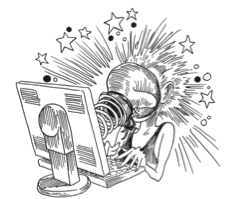When I was twenty-five years old I appeared in the pages of the New York Times Magazine in my underwear. Well, almost. A cartoon drawing of a girl in her underwear—a girl who, with her short blond hair and apple cheeks over a pointed chin, looked remarkably like me—appeared in conjunction with an essay I’d written about the way Generation X was reacting to the safe-sex message. The year was 1996 and the AIDS crisis, though technically past its apogee, seemed to have finally succeeded in infiltrating every corner of the general public consciousness and scaring the hell out of it. Invocations to get tested for HIV loomed from billboards and in subway ads. Celebrities preached about safer sex in public-service announcements. Music videos and advertisements appropriated AIDS awareness as not only a form of provocation but an agent of style. It was the year of the Broadway debut of Rent, a modern-day retelling of La Bohème that featured several characters who were either infected with HIV or dying of AIDS.
The essay had been brewing in my mind since at least two years before, when I’d been jolted by a print advertisement for the Benetton clothing company. It featured more than a thousand tiny photos of smiling, attractive young people purporting to represent every part of the world. Intermittent faces were shaded and partially obscured by the word AIDS, creating a visual effect that spelled out the word in larger type when you looked at the image from farther back. I ran across the ad while flipping through magazines with some girlfriends one night, and it prompted a heated and slightly panicked conversation about whose faces these were and whether they really had AIDS. One friend said, “Yes, of course they do; that’s how bad things have gotten.” Another wasn’t sure, and I thought it couldn’t be possible. This led to an even more heated discussion about how dangerous the world was and how we, as twentysomething females living in New York City, should perhaps hang up our dancing shoes (or, in our case, black leather lace-up boots) and marry the next person we met (after the requisite health screenings, of course), lest the single life literally kill us.
I was a young writer back then. I won’t say “aspiring writer,” because I’d actually managed to publish a few things that elevated me slightly out of the “aspiring” camp and were steering me into the “promising” camp. Still, I was green. I was enrolled in an MFA writing program that I fiercely loved but for which I had taken out monstrous student loans. It seemed worth it, though. In my second...
You have reached your article limit
Sign up for a digital subscription and continue reading all new issues, plus our entire archives, for just $1.50/month.
Already a subscriber? Sign in





